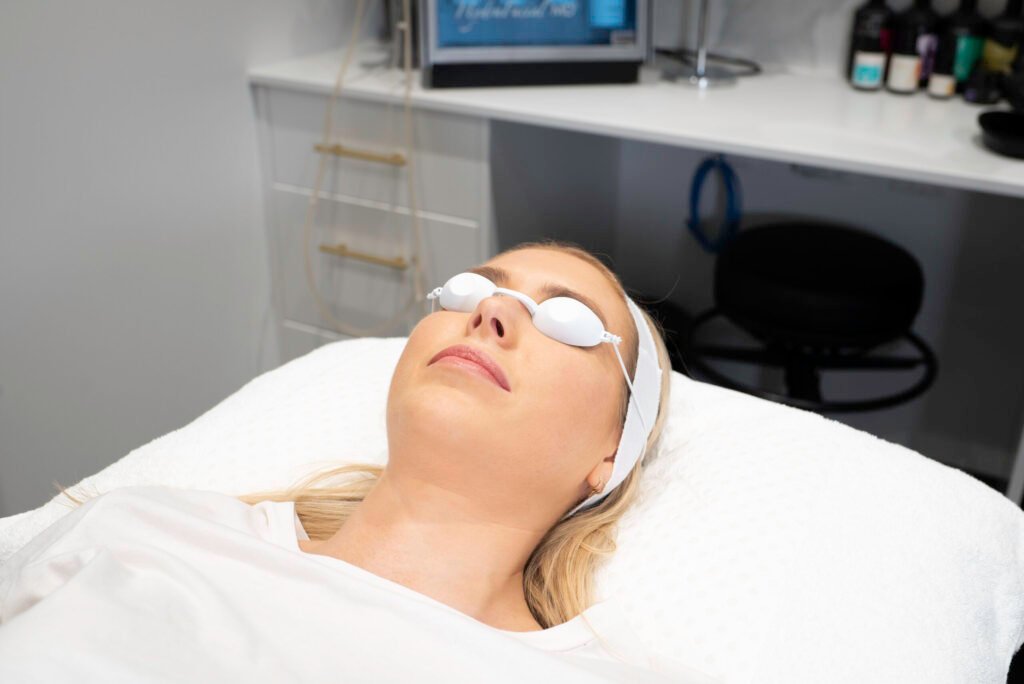Laser treatments such as LDM, Fraxel, PDT, or Gold PTT are widely used in Korea to combat acne, acne scars, and inflammation. But while these treatments offer excellent results, what you do after the procedure is just as important as the treatment itself.
To help you maintain clear, healthy skin long after your session, here are the most effective post-laser skincare and lifestyle tips trusted by Korean dermatologists.
🧴 1. Build a Gentle and Consistent Skincare Routine
After laser therapy, your skin barrier is temporarily weakened. Stick to a minimalist, fragrance-free routine that focuses on healing and hydration.
Korean Post-Laser Essentials:
- Cleanser: Low pH gel or cream cleanser (e.g., SoonJung pH 6.5 Cleanser)
- Toner: Calming and alcohol-free (e.g., Round Lab Mugwort or Etude SoonJung)
- Essence/Serum: Soothing and hydrating (e.g., Dr. Jart+ Cicapair, Isntree Hyaluronic Acid)
- Cream: Barrier-repair creams (e.g., Aestura Atobarrier 365, Illiyoon Ceramide Ato)
- Sunscreen: Mineral-based SPF 50+ (e.g., Make P:rem UV Defense Me)
✅ Tip: Use Cica (Centella Asiatica) and panthenol-based products to reduce inflammation.
☀️ 2. Protect Your Skin from UV Rays
Sun exposure is the #1 cause of post-laser pigmentation and inflammation. After any laser treatment, your skin becomes more photosensitive—even on cloudy days.
How to Protect Your Skin:
- Apply a broad-spectrum SPF 50+ daily (zinc-based is best)
- Wear a wide-brimmed hat or carry a UV umbrella
- Avoid direct sunlight between 10 AM–3 PM
- Reapply sunscreen every 2–3 hours if outdoors
🚫 Skipping SPF can reverse the benefits of your laser treatment.
🛌 3. Prioritize Skin Recovery & Sleep
Korean dermatologists emphasize the importance of sleep and rest in skin recovery.
- Aim for 7–9 hours of quality sleep to support collagen regeneration
- Avoid intense workouts for the first 3–5 days after treatment (sweat can irritate)
- Sleep on a clean pillowcase and avoid rubbing your face
💤 Tip: Consider silk pillowcases to reduce friction and irritation.
💧 4. Keep Your Skin Hydrated — Inside and Out
Laser-treated skin loses moisture more quickly. Hydration is key to healing and preventing flakiness or clogged pores.
- Drink at least 2 liters of water daily
- Use multi-weight hyaluronic acid serums for layered hydration
- Apply a humidifier at night, especially in dry climates or air-conditioned rooms
🧴 Products like Isntree Hyaluronic Acid Essence and Dr. G Red Blemish Cream are excellent for long-lasting hydration.
🍽️ 5. Eat Skin-Friendly, Anti-Inflammatory Foods
Korean dermatology often supports internal wellness alongside skin treatment.
Eat More:
- Omega-3 rich foods (salmon, flaxseed)
- Antioxidant-rich veggies (spinach, broccoli)
- Vitamin C fruits (kiwi, oranges)
- Probiotics (kimchi, yogurt)
Avoid:
- Excess sugar and dairy (can trigger breakouts)
- Fried and spicy foods (increases skin inflammation)
🥗 Tip: Many Korean skin clinics recommend vitamin C and zinc supplements post-laser.
🚫 6. Avoid Harsh Ingredients (Especially in the First 7–10 Days)
Your skin is extra sensitive after treatment. Avoid the following until your doctor says it’s safe:
- Retinol or retinoids
- Vitamin C (L-ascorbic acid)
- AHAs/BHAs (glycolic/salicylic acid)
- Peels, scrubs, or facial cleansing devices
- Alcohol-based toners or spot treatments
⏳ Reintroduce these slowly under dermatologist guidance—often after 2 weeks.
😌 7. Follow Up With Your Dermatologist
In Korea, follow-up care is considered essential to long-term skin improvement.
- Schedule follow-up visits every 2–4 weeks as advised
- Ask about booster sessions (like LDM or LED light therapy)
- Request a customized skincare prescription if breakouts or sensitivity return
🏥 Many Korean clinics offer membership skincare packages with regular laser maintenance, facials, and checkups.
🧖♀️ 8. Try Korean At-Home Soothing Treatments
Between clinical sessions, Korean beauty fans often turn to at-home care rituals to maintain results.
- Sheet Masks: Look for Centella, Madecassoside, or Mugwort-based masks (e.g., Mediheal or Dr. Jart+)
- Soothing Pads: Use when skin feels hot or inflamed (e.g., Mediheal Madecassoside Blemish Pad)
- LED Masks: Red light therapy at home can boost healing and collagen (safe after 1–2 weeks)
🛀 Weekly self-care promotes calm, balanced skin and extends results.
Final Thoughts
Laser treatments can transform acne-prone or uneven skin—but long-lasting results require smart, gentle care. In Korea, post-laser maintenance is a combination of scientific skincare, lifestyle habits, and routine clinical care.
With the right routine, you can enjoy smooth, clear, and radiant skin—months or even years after your last laser treatment.




